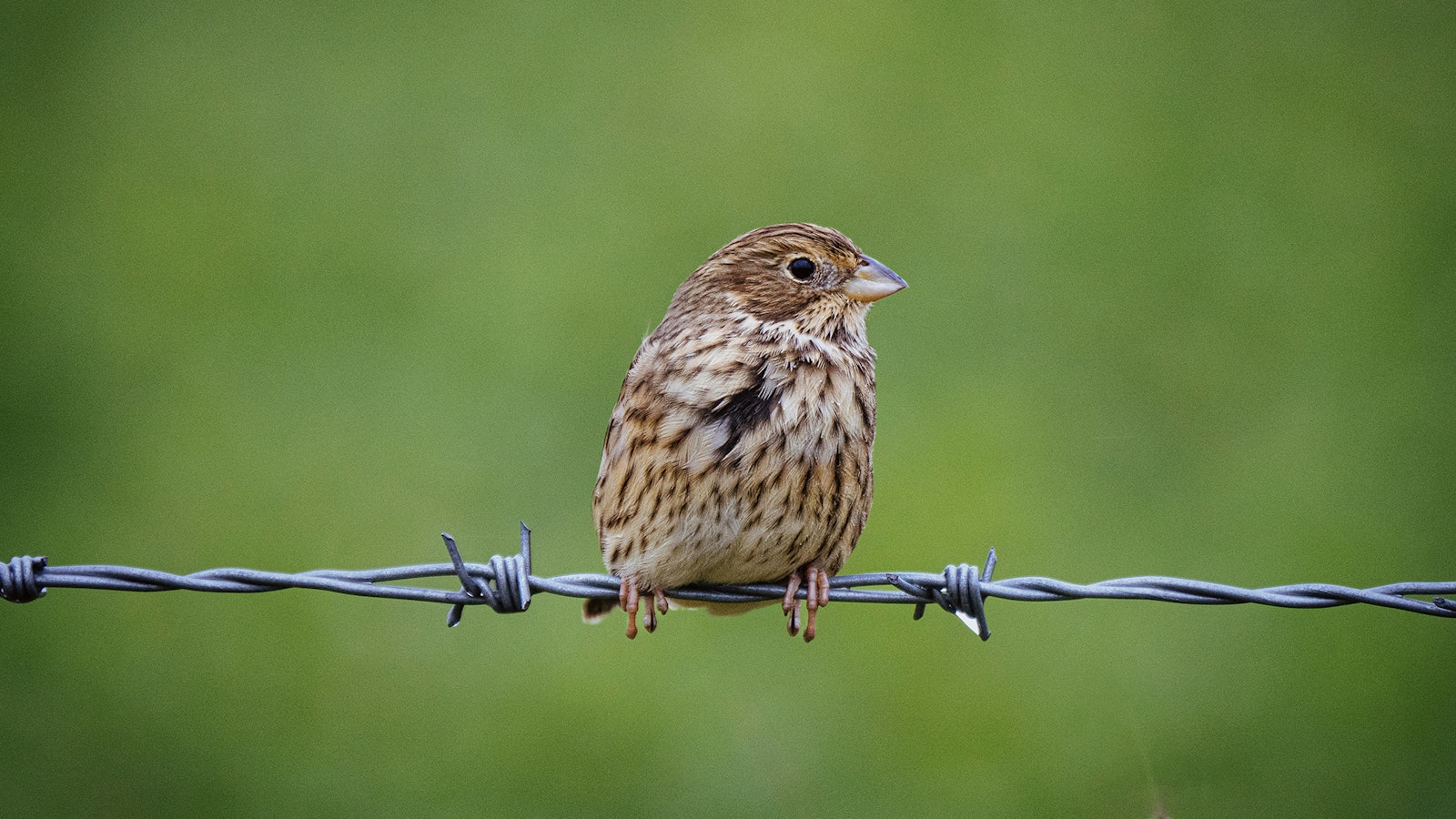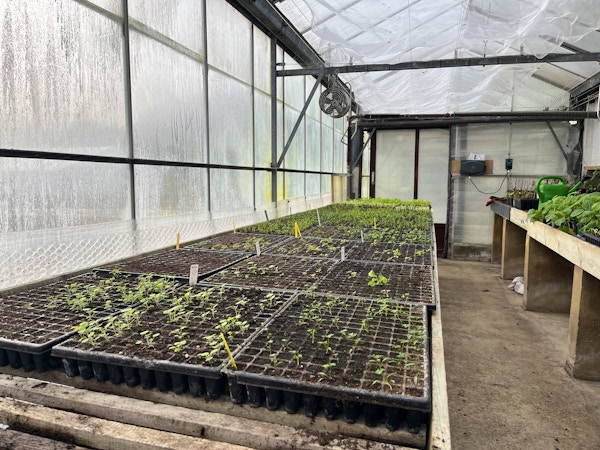
You have overseen the doubling in size of Blenheim Palace’s Walled Garden. Can describe what that process has been like?
It started with the vision to extend into the empty space beyond the former boundaries of the kitchen garden. After a thorough planning stage and a successful proposal to Blenheim’s management team, we (me and a team of six people) built the 80 new beds through the month of January. It involved wheelbarrowing 160 cubic metres of compost, top soil and woodchip into neat rows, all done by hand without machines.
You arrived at Blenheim three years ago. What was the Walled Garden like then?
The Walled Garden was relatively underused compared to what it is now and felt in many ways like a blank slate. There was a lot more bare lawn area than there is now!
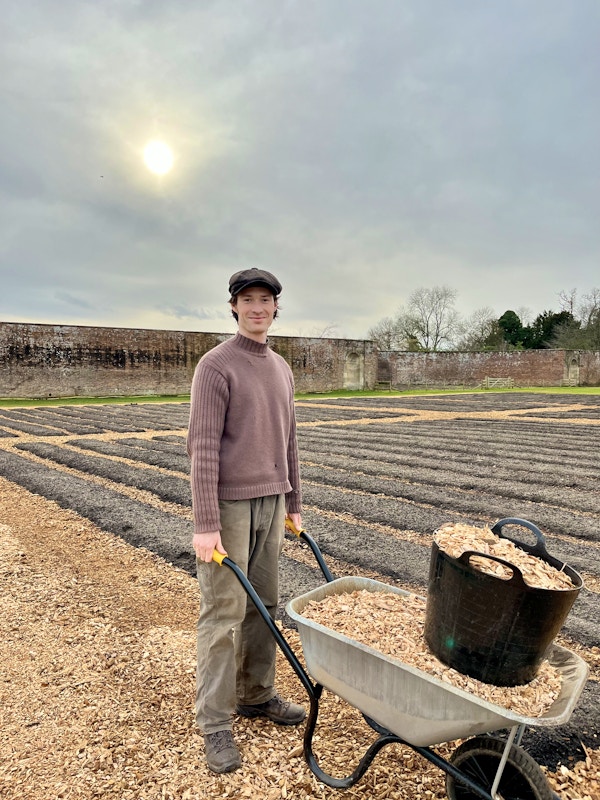
The gardens supply the busy kitchens at Blenheim – what are the cooks getting through a lot of at the moment?
We’re supplying a weekly harvest of fresh salad leaves, rocket and some micro herbs, but in not too long, there will be spring onions, rhubarb, asparagus, baby spinach and much more.
What inspired the decision to expand the kitchen garden, and what challenges did you face during the expansion?
We wanted to make the kitchen garden more productive and provide a greater percentage of the chef’s total needs. The new kitchen garden also improves the visitor experience of the walled garden, transforming lawn into flourishing vegetable beds, salads, herbs and flowers.

The goal of self-sufficiency by 2027 is ambitious – what steps are you taking to ensure this target is met?
We’re working with the chefs to calculate their needs and planting the required amount of vegetables in the beds. Certain perennial vegetables like asparagus, strawberries and rhubarb will be planted this year, but will only begin to yield significant harvests by 2027.
How has the no-dig method transformed the way you cultivate crops, and what are its biggest benefits?
Without ploughing or digging the earth, we lay down compost and grow into the rows created in this way. Its biggest benefits involve not disturbing the micro-organisms and fungal networks living in the soil which comprise the soil’s fertility.
Are there any heritage or rare varieties of fruits and vegetables you are particularly excited about growing?
We’re growing some perennial vegetables this year like sea kale, tree spinach and Korean celery which are all everlasting alternatives to their more common annual counterparts. This is beneficial because perennials don't require replanting each year and hence reduce the disturbance of the soil.
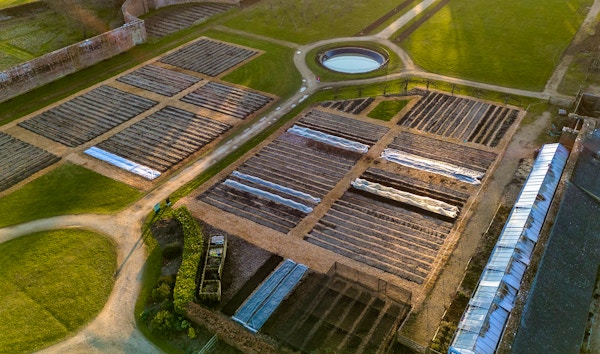
Can you tell us about any unexpected successes or failures you’ve encountered while reviving the garden?
I’ve learned lots about soil health and fertility simply by observing how plants respond to their living conditions in the Walled Garden. Last year some crops failed due to overwatering during an already wet year. This caused soil compaction which we can now remedy through aerating the soil using a handtool called the Broadfork. Rather than inverting the soil, it simply lifts up the top three inches allowing air to enter and the soil to be kept in a healthy aerobic condition. This was a failure which has led to a better method going forwards.
Where had you been up until that point?
I was an archaeology and anthropology student at Oxford until 2019, after which I developed a keen interest in agroecological ways of growing food and self-educated myself as a kitchen gardener. My brother Lawrence and I formed our business, Worthy Earth, which started as a small veg box business in Martyr Worthy, a small village near Winchester. Over the last five years, we have built the business to 10 sites across Hampshire, Oxfordshire and Surrey – focusing on transforming walled garden spaces into flourishing kitchen gardens again, Blenheim being the most notable and the largest.
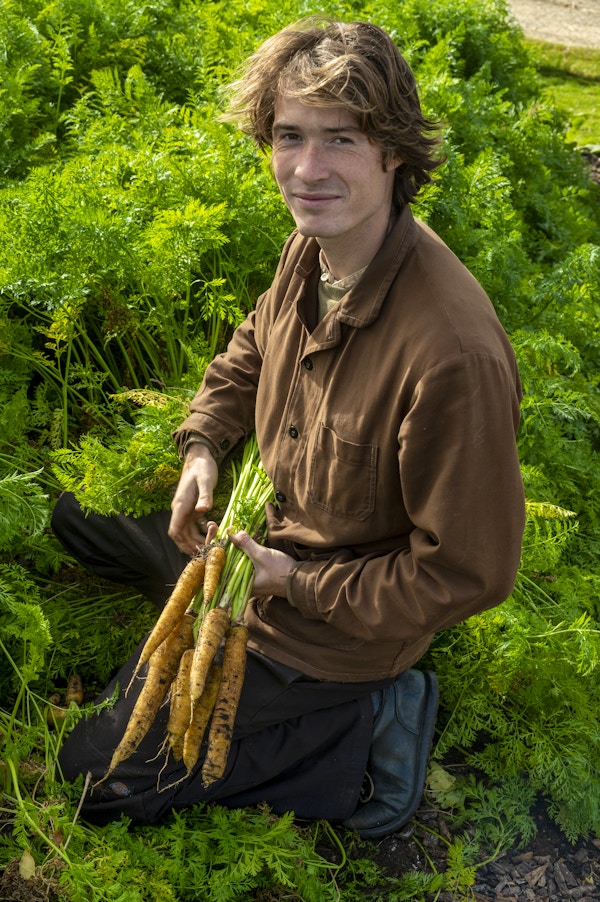
How do you decide which vegetables, herbs, and flowers to grow? Is it based purely on kitchen demand, or do other factors come into play?
Kitchen demand plays a huge role because we want to satisfy their needs and not grow anything for the compost pile. We are determined to grow vegetables and herbs and flowers all together, mixing them all up into the same growing area and this philosophy – known as companion planting – features in our decision making on what to plant and where.
What role does sustainability play in your gardening practices, beyond reducing food miles and plastic waste?
Sustainability is fundamental to our gardening practices at Worthy Earth because we simply won’t have the ecological resources to continue feeding ourselves in several generations if we fail to be sustainable. We have an aversion to using machines, not because of luddism, but because it doesn’t make sense to import a fuel from the North Sea or the Gulf states simply to power a machine to do the job that could be done by a human being. Being sustainable also means operating on a human scale. We recognise that looking after the soil is just as important as growing crops, so we would never even consider using an artificial fertiliser or weedkiller as these are deeply toxic and harmful to the soil health.

You’ve mentioned the potential for surplus produce to be sold to visitors. How exciting! How might this change the visitor experience at Blenheim?
There will be a veg shed or cart for visitors to purchase surplus produce grown on the garden. It’s another way of feeling closer to the project and for visitors to eat their share of the harvest.
What advice would you give to home gardeners who want to incorporate the no-dig method into their own vegetable patches?
Follow Charles Dowding on YouTube – he gives you all the information you need to get started. Watching his videos gave me the early inspiration to do what I do now.
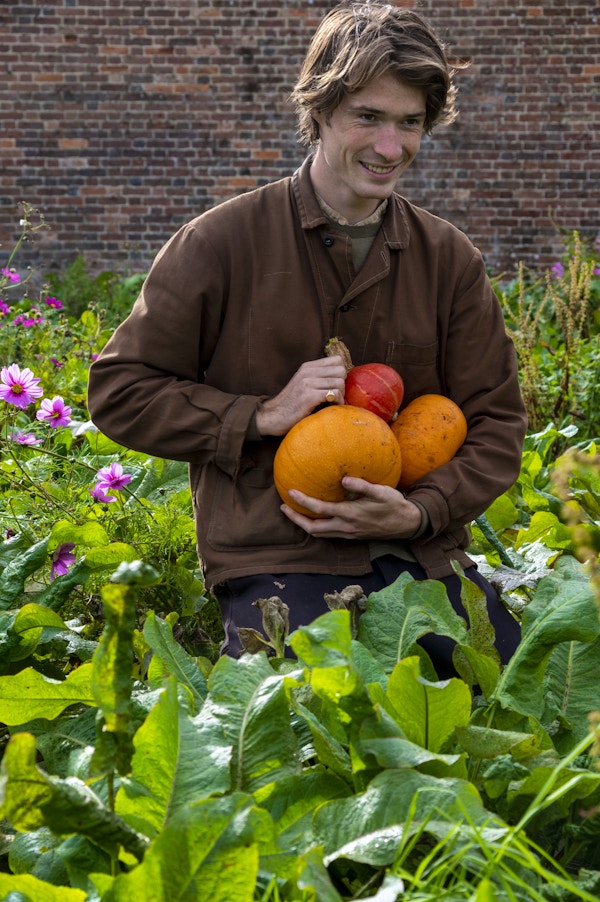
What veg would you like to inspire gardeners to grow at home?
Think seasonally and spatially. If you have a small garden think about how low-lying crops (e.g. radish and beets) could be interplanted with taller crops (e.g. kale and leeks).
What jobs are you busy with at the moment…
Frantically planting out seedlings which were sown in January and February!
Gardening is often a labour of love – what do you personally find most rewarding about your work at Blenheim Palace?
That feeling at the end of a long summer’s day when your hands are covered in dirt and the sun is setting over the wall and nobody else is around and experiencing a profound sense of completion.
Images: Pete Seaward





